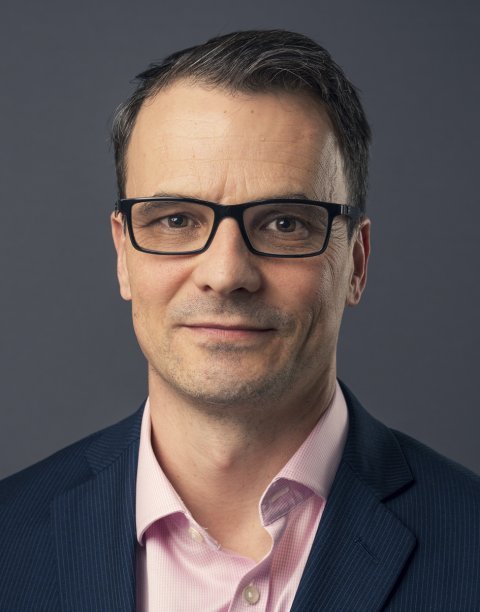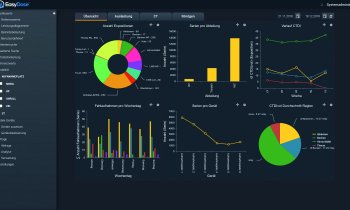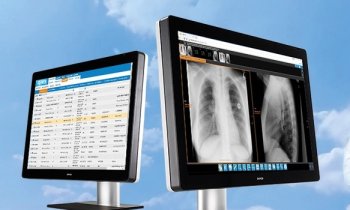Image source: Shutterstock/everything possible
Article • UK hospital gains single platform data access
Implementing an enterprise-wide imaging strategy
The current introduction of instant access to all patient clinical imaging and medical documentation in one picture archiving and communication system (PACS) for use throughout the Princess Alexandra Hospital Trust (PAHT), in Essex, UK, lies in the hands of Imaging Systems Manager and radiographer Stephen Townrow.
Report: Mark Nicholls
In 2017, Townrow went to his hospital’s Board with a business case to consolidate all the organisation’s different types of imaging into one single platform. ‘It’s about clinicians not having to go to multiple different systems and departments, and only having one system to manage,’ he explained. Thus, PAHT began the process of adopting this overall imaging strategy.

The first phase went live in April 2018 and the Trust is now mid-way through the step-by-step implementation of enterprise-wide image management. The first department to transition was cardiology. Previously, the section’s archiving was contained on CD and not readily-accessible around-the-clock to other departments, such as A&E. Data is now on the new system and connected to an imaging exchange portal so other centres can also view images.
Within the NHS, digital imaging has tended to grow piecemeal and, as a consequence, various hospital departments tend to operate in silos with different systems, protocols and practices that are often not linked.
A critical step
Adoption of a hospital-wide image management set-up is a critical step in breaking that down and offering a more joined-up imaging service, said Townrow. The NHS is only slowly shifting forward in this way, he pointed out, adding: ‘It’s 2019 – this is something we really need to get sorted.’
I think the biggest hurdle to overcome is storage space. We’ve just installed half a petabyte of storage, which will see us through the next five years
Stephen Townrow
At PAHT, where the system is web-based, enabling broad and secure access, the stepped approach saw medical photography follow cardiology, with theatres recently added. Next comes ophthalmology, which already has a PACS system, but the enterprise imaging approach will deliver access to that department’s system without major investment. ‘With cardiology, we spent 12 months working out their workflow – what is it now, what they want it to be, and how can it be safe, quicker and more efficient? Once it worked with cardiology, we could use that as a template to roll out to other areas. Back-up is provided between two data centres, so if one goes down the other takes over. ‘I think the biggest hurdle to overcome is storage space,’ he added. 'We’ve just installed half a petabyte of storage, which will see us through the next five years.’
With that additional storage, other departments will be included over the next 18 months with pathology the final phase in the PAHT enterprise imaging roadmap. ‘We wanted to move everything else, because we knew pathology would be a big step in terms of workflow and storage but we now have enough storage to do that. Other departments are already using digital form but with digital pathology we are almost starting from scratch. We are doing it in mini stages but in another 18 months all will be in place, unified and in one solution,’ Townrow foresees. ‘But, it’s also about patient care as well as management of their care.’
At PAHT, the original plan was for a new radiology PACS, but Townrow lobbied the hospital board for a broader and longer-term solution and one that would offer future-proofing. A shortlist of five vendors was whittled down to two and finally Agfa was selected.
‘So far, the feedback from clinicians is that it’s making their jobs easier. Also, with our web PACS solution, they can look at images on mobile devices and show patients and be more engaging with them,’ he pointed out. Advice he would give to other NHS Trusts considering a move to enterprise-wide image management is to have a considered plan with relevant timescale and enough storage space. ‘Try not to do it all in one go because there are so many different departments that work in different ways.’ Townrow is confident the investment in this enterprise-wide management solution will offer long-term benefits and be cost effective.
PAHT has also upgraded its voice recognition system – using this in 100% of cases from the go-live, which had a massive impact. Plain film reporting turnaround has gone from three weeks under the convoluted process of dictation, typing and verification to now turning around 90% of plain film on the same day – an achievement for which PAHT has gained Care Quality Commission recognition.

Paul Jackson, Agfa HealthCare Head of Marketing (Europe North), said an enterprise imaging platform helps hospitals free medical images and information from its information silos, enabling the meaningful capture, storing, exchange of and access to medical images directly through the electronic patient record (EPR). ‘Within the NHS,’ he added, ‘there are two influencing factors around effective enterprise-wide image management. Firstly, the shift is easier to make if an organisation already has an EPR in place. Secondly, the enterprise imaging strategy needs to be a fundamental part of the organisation’s wider IT strategy, with the appropriate executive level of support, clinical sponsorship and resourcing. In addition, the organisation needs the appropriate foundation enterprise imaging platform to build on.’
Agfa HealthCare’s enterprise imaging platform, he said, had already helped organisations like PAHT see significant benefits in being able to see more patients, more quickly and provide a faster, efficient, diagnostic service without compromising quality.
Profile:
Stephen Townrow is Imaging Systems Manager at Princess Alexandra Hospital NHS Trust in Harlow, Essex. A radiographer by profession, he has a strong IT background.
11.10.2019











